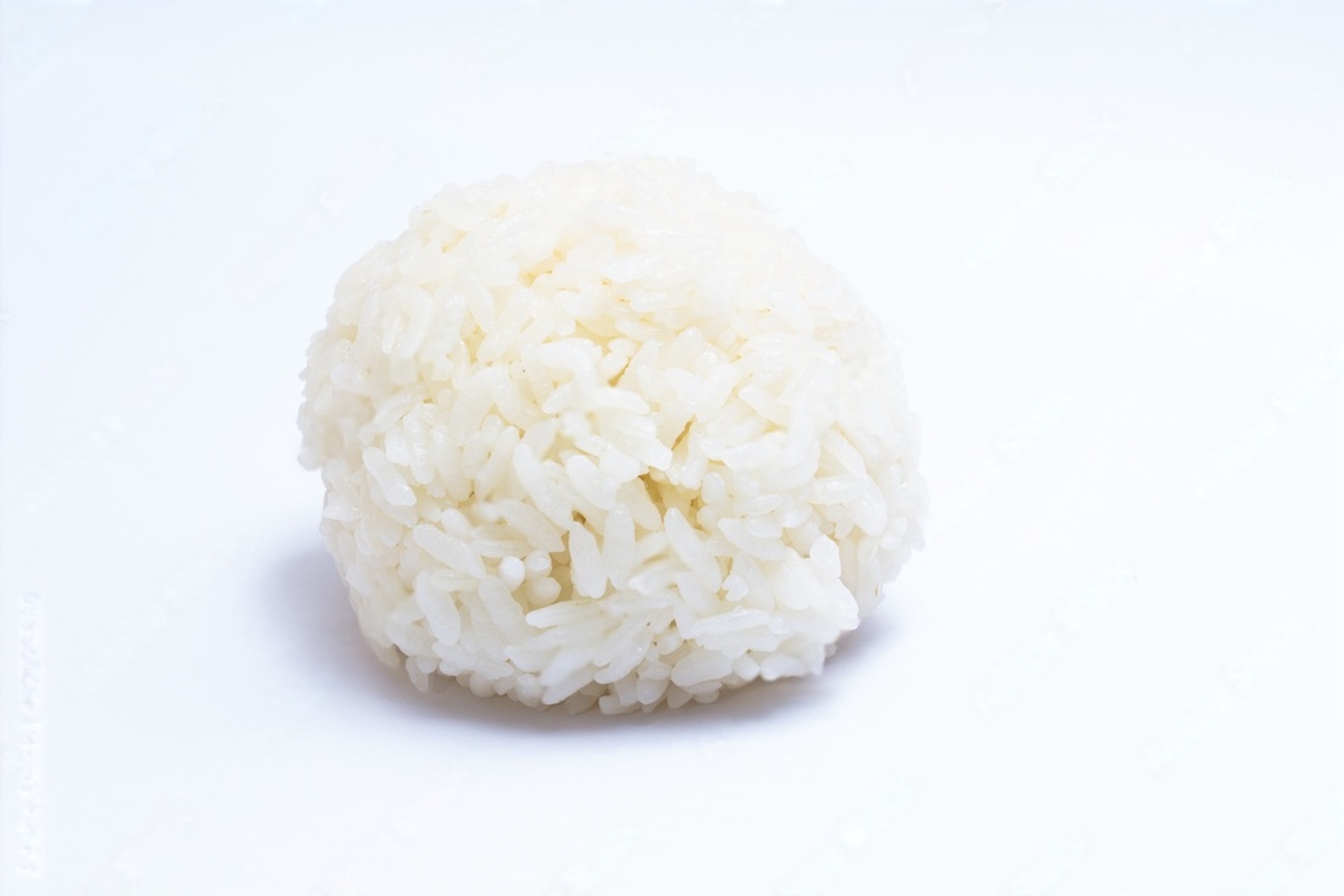
Rice balls, also known as onigiri in Japanese cuisine, are a popular and versatile dish made from cooked rice and various fillings, often wrapped in a sheet of nori seaweed. These delightful snacks are not only flavorful but also convenient for on-the-go consumption. Whether you’re preparing a batch of rice balls in advance or have leftover rice from a meal, freezing them can be a great way to extend their shelf life without compromising their taste and texture. By following these simple steps, you can freeze rice balls effectively and enjoy them at your convenience. This article outlines a comprehensive guide to freezing rice balls while ensuring they remain just as delicious when you’re ready to enjoy them.
Here’s a step-by-step guide on how to freeze rice balls:
Step 1: Prepare your rice balls
When it comes to freezing rice balls, the first and most crucial step is to ensure that your rice balls are in optimal condition before they make their way into the freezer. Whether you’ve just whipped up a fresh batch of these delectable treats or you’re dealing with some leftover rice that’s begging to be transformed into something delightful, there are a few key factors to consider in order to guarantee the best results.
First and foremost, it’s important to remember that temperature plays a significant role in the freezing process. If you’ve just made a batch of rice balls, it’s wise to allow them a brief period to cool down slightly before you embark on the freezing journey. This is because subjecting piping hot rice balls to the freezer right away can lead to unwanted moisture buildup, which can adversely affect their texture and overall quality.
On the flip side, if you’re working with leftover rice from a previous meal, it’s equally important to ensure that the rice has cooled down to room temperature before you proceed with the freezing process. Placing warm or hot rice directly into the freezer can result in uneven freezing, potentially leading to freezer burn or an altered taste and texture once you decide to enjoy your rice balls in the future.
To achieve the best results, give your freshly prepared rice balls or leftover rice a bit of breathing room before freezing. Allowing them to cool to a suitable temperature not only safeguards their integrity during freezing but also ensures that you’ll experience the same satisfying taste and texture when you decide to indulge later on.
Remember, proper preparation is key to successful freezing. So take the time to let your rice balls reach the right temperature before moving on to the next steps in the freezing process. Your taste buds will thank you when you savor those frozen rice balls with the same delight you had when they were freshly made.
Step 2: Wrap the rice balls
Once you’ve ensured that your rice balls are at an ideal temperature, it’s time to move on to a crucial step in the freezing process: wrapping each rice ball individually. While this might seem like a small detail, it holds significant importance in preserving both the taste and presentation of your rice balls during their time in the freezer.
The primary purpose of individually wrapping each rice ball is to prevent them from sticking together. Rice has a tendency to become sticky when frozen, and without proper separation, you could end up with a solid mass of rice balls that are challenging to separate without damaging their shapes. By wrapping them individually, you create a protective barrier that prevents direct contact between the rice balls, maintaining their distinct forms.
Moreover, wrapping each rice ball ensures that they don’t absorb excess moisture from the freezer environment. Moisture can lead to undesirable texture changes and potentially even freezer burn, which can negatively impact the flavor and quality of your rice balls. The wrap acts as a shield, preserving the integrity of each rice ball and keeping them in optimal condition until you’re ready to enjoy them.
When it comes to choosing the wrapping material, you have a couple of options: plastic wrap or parchment paper. Plastic wrap provides an airtight seal that minimizes the risk of freezer burn, while parchment paper allows for breathability, reducing the chances of condensation buildup. Whichever option you choose, make sure to wrap each rice ball securely, paying attention to all sides to ensure there are no exposed areas that could be vulnerable to freezer-related issues.
Step 3: Place in a resealable bag
With your rice balls individually wrapped and primed for freezing, it’s time to transition to the next crucial step: packaging them for their chilly sojourn in the freezer. The way you package your wrapped rice balls plays a pivotal role in preserving their flavor, texture, and overall quality over time.
Your go-to option for packaging is a resealable plastic bag, specifically designed to protect food items from freezer-related issues. These bags are not only convenient but also offer a high degree of protection against moisture, air exposure, and potential freezer burn. As you place the wrapped rice balls inside the bag, make sure to arrange them in a single layer, ensuring they don’t overlap or stack too tightly. This setup allows for even freezing and easier separation when you’re ready to enjoy them.
One of the key aspects of using a resealable bag is to eliminate as much air as possible before sealing it shut. Air contains moisture, and when frozen, it can form ice crystals that may alter the texture and taste of your rice balls. Squeezing out excess air minimizes the risk of freezer burn and maintains the desired quality of your snacks.
In case you prefer an alternative to plastic bags, an airtight container can also be a reliable choice. Opt for a container that’s designed for freezing and has a tight-sealing lid. Similar to using a resealable bag, arrange the rice balls in the container with enough space to avoid overcrowding. Once again, the goal is to ensure that the rice balls maintain their shape and quality during their time in the freezer.
Whether you choose a resealable bag or an airtight container, the key is to shield your individually wrapped rice balls from potential moisture and air exposure. This step is vital to preserving their original taste and texture, ensuring that when you eventually retrieve them from the freezer, they’ll be as delicious as the moment you prepared them.
Step 4: Label and date
As your rice balls find their designated spot inside the resealable bag or airtight container, it’s time to incorporate an organizational step that can make a significant difference in your frozen food management: labeling and dating. This seemingly simple task holds immense practical value when it comes to keeping track of your frozen delights and ensuring that they’re enjoyed at their best.
Using a permanent marker, jot down crucial information directly on the packaging. Begin by noting the contents of the bag or container—this might seem obvious now, but as time passes, frozen items can become a mystery, and a quick label can save you from unexpected surprises later on. In this case, write “Rice Balls” or “Onigiri” so that there’s no ambiguity about what’s inside.
The second piece of information to add is the date of freezing. This detail serves as a helpful reminder of how long the rice balls have been in the freezer. Over time, frozen foods can experience changes in taste and texture due to factors like freezer burn or degradation. By including the freezing date, you’ll have a clear reference point to gauge the freshness of your rice balls and decide whether it’s time to enjoy them before any unwanted changes occur.
Maintaining a reasonable time frame for frozen foods is crucial for their optimal quality. Different foods have varying recommended freezer storage times, and rice balls are no exception. Typically, it’s recommended to consume frozen rice balls within a period of 1 to 2 months to ensure that they retain their original taste and texture. With the freezing date readily available on the packaging, you can make informed decisions about when to enjoy your rice balls without any doubts about their quality.
Step 5: Freeze
Now that your rice balls are wrapped, packaged, labeled, and dated, it’s time to introduce them to their chilly home—the freezer. This step marks the beginning of their frozen journey, where they’ll patiently await the moment when you’re ready to relish their flavors once more. However, the way you position your rice ball package in the freezer is a detail that deserves attention, as it can directly impact their appearance and quality.
As you place the labeled bag or container in the freezer, it’s essential to consider the placement and positioning of the package. Avoid stacking heavy items or placing anything with a considerable weight on top of the rice ball package. Pressure can lead to the deformation of the rice balls and compromise their individual shapes. To prevent this, ensure that the package is placed on a flat surface in the freezer, where it won’t be subject to any unnecessary weight or pressure.
Furthermore, you should strive for proper spacing in the freezer. Avoid overcrowding the freezer space around the rice ball package, as adequate airflow is crucial for maintaining an even temperature. Proper airflow helps prevent temperature fluctuations and ensures that the rice balls freeze uniformly, preserving their quality and taste.
By thoughtfully positioning the rice ball package in the freezer, you’re taking a proactive step to maintain the integrity of your carefully wrapped and packaged snacks. Remember, these minor considerations can have a major impact on the final outcome. Your goal is to retrieve the same perfectly shaped and flavorful rice balls you tucked away, free from any unwanted alterations that could arise from improper storage conditions.
As your rice ball package finds its designated spot in the freezer, you’re one step closer to ensuring that your future self will have the pleasure of enjoying these frozen treats just as you intended. A bit of care and attention during the freezing process go a long way in guaranteeing that your rice balls remain a delightful and convenient culinary option for days to come.
How long can I keep frozen rice balls?
Frozen rice balls can be stored for 1 to 2 months for best quality. While they might remain safe to eat beyond that, taste and texture may deteriorate over time. Proper storage helps maintain their deliciousness.
Step 6: Thaw and enjoy
After patiently waiting for the perfect moment, it’s finally time to retrieve your frozen rice balls from their icy abode and savor their deliciousness once again. However, the process of thawing your rice balls requires a touch of patience and a bit of understanding to ensure that they retain their enticing texture and flavors.
To begin the thawing process, gently remove the labeled and dated bag or container from the freezer. Avoid any abrupt movements that could potentially damage the packaging or the rice balls inside. Once out of the freezer, resist the temptation to rush the thawing process by using methods like a microwave or hot water, as these can lead to uneven thawing and result in changes to the rice balls’ taste and texture.
Instead, opt for a gradual thawing approach. Place the bag or container on a clean, flat surface at room temperature. Allow the rice balls to thaw naturally for a few hours. The duration of thawing depends on factors like the size of the rice balls and the room temperature. Generally, smaller rice balls may thaw faster than larger ones.
During the thawing process, the rice balls will gradually return to their original texture and flavor. The gradual thawing helps prevent moisture loss and ensures that the rice remains moist and satisfyingly chewy. Once fully thawed, the rice balls should closely resemble their freshly made counterparts, delivering the same delightful taste and satisfying mouthfeel.
It’s worth noting that once rice balls are thawed, they should be consumed relatively soon to fully appreciate their quality. Avoid refreezing thawed rice balls, as this can lead to further texture and flavor changes.
Can I reheat frozen rice balls in a microwave?
While possible, reheating frozen rice balls in a microwave might alter their texture. For better results, thaw them naturally, then reheat gently. Microwave in short intervals to avoid overcooking.
Other related questions
How do I know if the rice balls have gone bad after being frozen?
After thawing, inspect rice balls for off-smells, odd textures, or discoloration. If they smell sour or rancid, feel excessively mushy or gritty, or display unusual colors, they might have deteriorated. Trust your senses and discard if unsure to avoid consuming spoiled food.
Can I freeze rice balls with different fillings?
Yes, rice balls with diverse fillings can be frozen. Ensure fillings are properly cooked and assembled rice balls are tightly wrapped before freezing to maintain quality and prevent freezer burn. Experiment with various fillings for culinary variety.
Can I freeze rice balls that have been filled with raw fish or seafood?
It’s not advisable to freeze rice balls with raw fish or seafood fillings. Freezing might affect the quality and safety of the seafood. Consider adding these fillings fresh after thawing for the best experience.
Can I freeze rice balls with cream cheese or other creamy fillings?
Freezing rice balls with creamy fillings can lead to texture changes. Creamy fillings may become grainy after freezing. Add these fillings fresh after thawing for best results and taste.
Can I freeze rice balls with nori seaweed already wrapped around them?
It’s recommended to avoid freezing rice balls with pre-wrapped nori seaweed. Freezing can affect nori’s texture and crispness. Add nori after thawing for the best taste and visual appeal.
Should I add condiments before freezing rice balls?
It’s better to add condiments like sauces or toppings after thawing. Freezing may affect their consistency and taste. Keep the condiments separate and add them before eating for the best flavor.
Can I freeze rice balls made with brown rice?
Yes, you can freeze rice balls made with brown rice. However, note that brown rice might have a slightly different texture after freezing and thawing compared to white rice. Ensure proper wrapping and storage for the best results.
Can I freeze rice balls that are already seasoned with soy sauce or other sauces?
It’s generally recommended to avoid freezing rice balls with heavy sauces. Sauces can become watery after freezing, affecting texture. Add sauces before eating for the best flavor.
Can I freeze rice balls with pickled or fermented fillings?
Freezing rice balls with pickled or fermented fillings is possible. However, expect slight texture and flavor changes in the fillings. Thaw naturally for optimal preservation of taste and quality.
Can I freeze rice balls that have been deep-fried?
Freezing deep-fried rice balls is not recommended as it can lead to loss of texture and taste. Freeze rice balls before frying for better results. Fry after thawing for desired texture and flavor.
Do frozen rice balls taste the same as freshly made ones?
Frozen rice balls are similar to freshly made ones in taste, but slight texture differences can occur due to freezing. Proper wrapping and thawing methods help maintain quality. Enjoy their flavors with minimal compromise.








